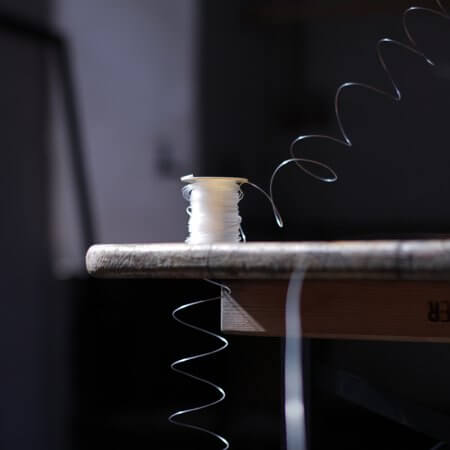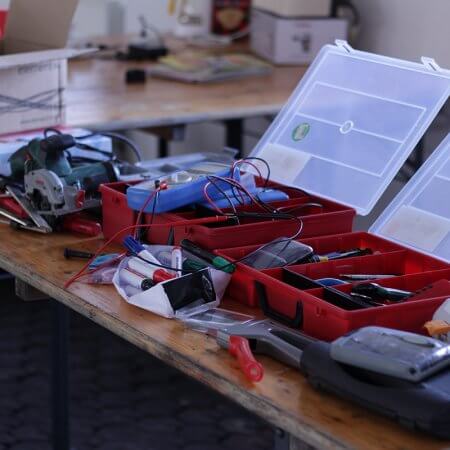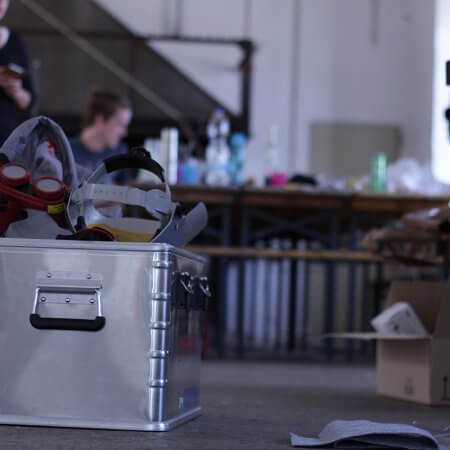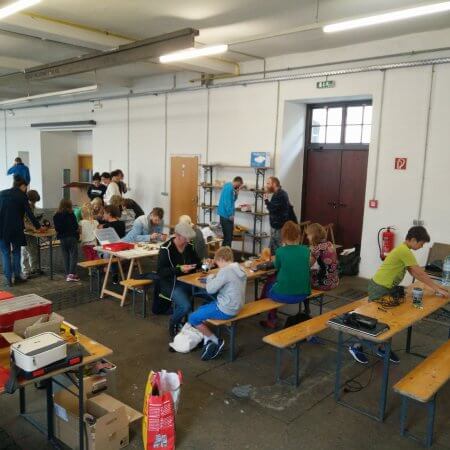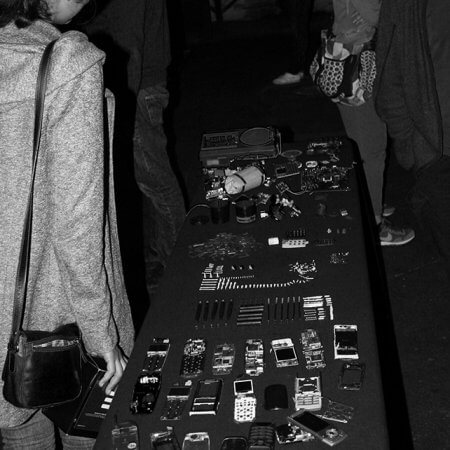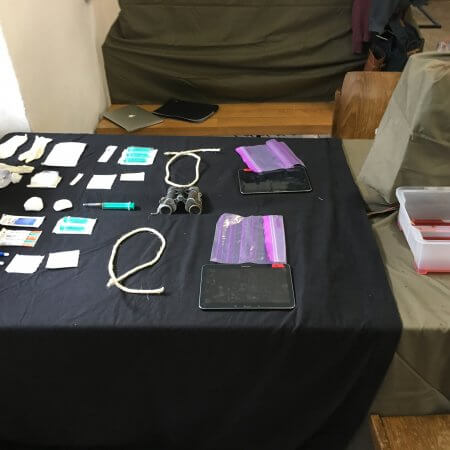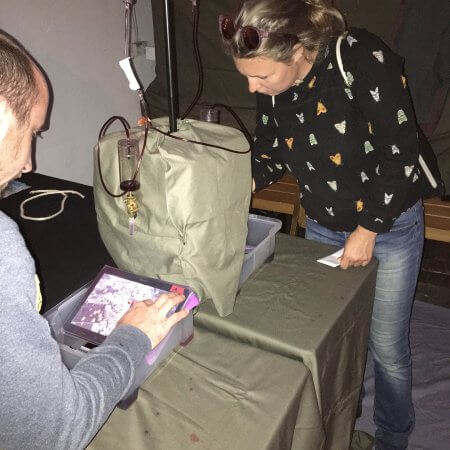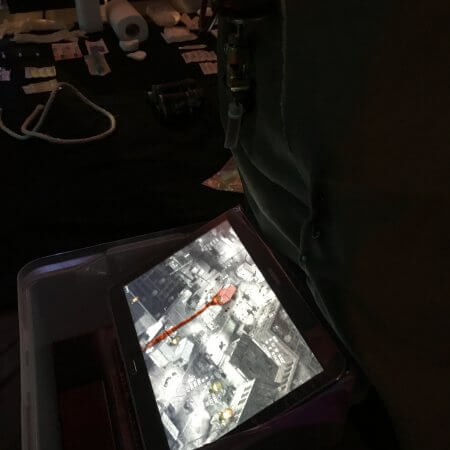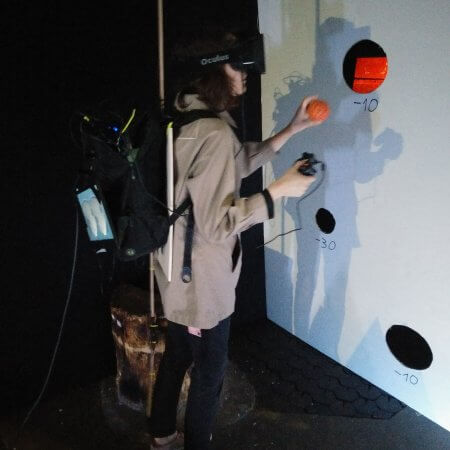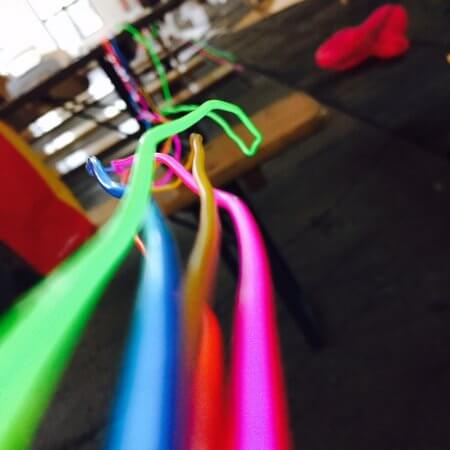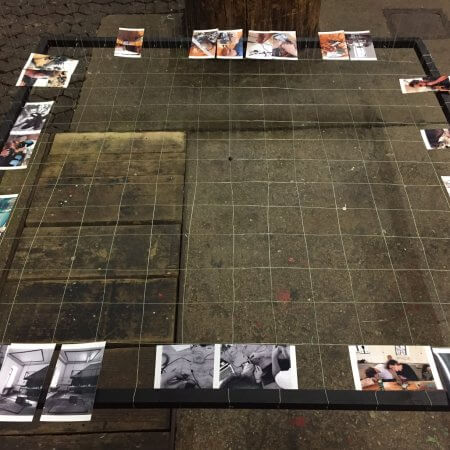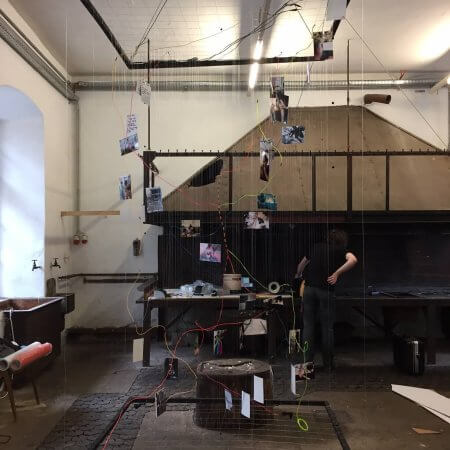Schmiede is a collaborative, experimental art and technology, festival-hackathon-hybrid. With around 300 people participating annually, Schmiede hosts smiths from all over the world with all kinds of backgrounds: visual arts, sound design, programming, performance arts, sculpture, installation design – just to name a few.
Every year in September, the smiths convene for ten days in The Saline on the Pernerinsel of Hallein, Austria, with the goal to create, network and present.
Deconstructive Interactions Lab at Schmiede 2016
In 2016, the Center for HCI participated in Schmiede for the first time, organizing one of the eight ‘labs’ that support the smiths in exploring their ideas. We relocated most of our workshop tools and materials to Hallein to run the Deconstructive Interactions Lab. In this lab, we helped the smiths to take apart, hack and build interactive artefacts and to support their own projects, in an effort to revive the youthful joy of taking apart the stuff that surrounds us, to figure out how it works.
Aside from supporting the smiths of Schmiede with their project, the Center for HCI also brought four projects to Schmiede, and ran a workshop with participants and outsiders alike.
Deconstructive Workshop
Many kids enjoy taking apart the stuff that surrounds them to figure out how things work: they break open toys, disassemble kitchen appliances and dissect animals. Embedded technology gets smaller and smaller; the digital reality gets hidden as pictures behind glass; we grow up; and we tend to forget about the intimate relationships to artefacts we create through taking them apart.
At Schmiede, we organized an afternoon workshop for participants of Schmiede and the general public. With some 20 participants – children and adults – we took apart a heap of old electronics: toys, phones, cameras, radios and the like, with the goal of creating new artefacts. During the workshop, several robots were created that would take part in Hebocon. Other smiths took the workshop as an opportunity to work on their own projects. The resulting traces of the workshop were displayed during the Schmiede Werkschau at the end of the festival.
The Deconstructive Workshop was part of a larger research effort into the facets of De-Constructive Interaction Design.
Reign in Blood
Reign in Blood is an interactive game installation that is based on interacting with fluids, e.g., blood, on a touchscreen. In this co-located two player game, the players take the role of warlords on a battlefield, aiming to fight the other player’s soldiers. Our design goal was to intentionally break touch-based interactions for gameplay purposes in order to make the game increasingly harder to play when in-game casualties emerged. The making of this project was driven by exploring fluids (e.g., blood) as an interaction design material and further, using the technical shortcoming of consumer hardware as a design resource.
The focus of this project was to explore how we could design for in-game events resulting in real-world consequences for the player, and further bridging the digital/physical divide by exploring alternative forms of interacting with existing technology. In its core, the project utilises metaphorical gameplay to question the ascribed meaning of blood on an interactional layer.
Deconstructing Perspectives
One of the best things of Schmiede is that just by virtue of being there, you can assume that most smiths are down to try weird, experimental setups – and that’s exactly what many smiths did during the showing of Deconstructing Perspectives at the final Werkschau of Schmiede. They hoisted a heavy backpack on their backs, put on some VR goggles and completed an obstacle course, all the while being shown only disembodied perspectives: a high, FPS game-like perspective, a side perspective, and an ant’s perspective. That is to say: while wearing the VR headset, smiths did not have the normal, first-person perspective that your eyes would normally provide. Instead, they had to acquaint themselves with these new perspectives, while managing several exercises in an obstacle course.
The goal of Deconstructing Perspectives was to explore the way in which people appropriate the viewpoints, how they adjust their movements and how they deal with obstacles from an alternative perspective.
The String Quartet
The String Quartet project focused on a methodological way to deconstruct the building processes of different projects at Schmiede. In building a physical frame (i.e., 3D Cartesian grid) to document the processes of creating five Schmiede projects (i.e., Reign in Blood, Deconstructive Perspectives, Sensory Deprivation (not described here), and the Deconstructive Workshop) over the period of 10 days, the string quartet served as a temporal and physical documentation and representation of a diverse set of creative practices.
While observing the artists during the entire process of building their installations and documenting critical points in the development with a camera, the artists were asked to interrogate their experiences within their projects on a 3-D Cartesian grid. This grid represented dimensions from divergence to convergence (x-axis) and individual to collaborative (y-axis), allowing the artists to indicate how divergent/convergent and individual/collaborative they have been working on a specific day on their projects.
To map these experiences, the artists were given LED light strips (each project was assigned a specific color) to interrogate their state for each day in the grid. Furthermore, print-outs of the taken pictures of the projects were attached to these LED strips to add additional contextual information and to provide a sense of the different working practices within these projects. Finally, after the 10 days the full process documentation of the five projects was shown to others at the Werkschau as an installation (interactive) light installation.
More about Schmiede
Curious? Convinced? More info about Schmiede can be found here.
